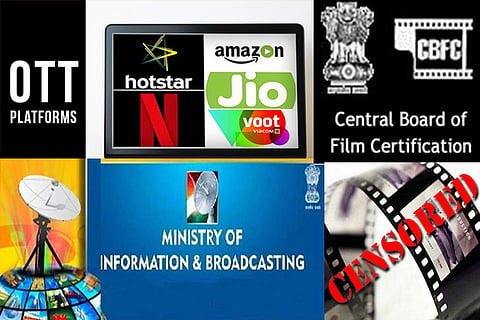

Chennai
Recently, a PIL was filed before the Madras High Court which sought the constitution of a body that could censor the content of user-generated and curated videos uploaded on social media platforms such as YouTube, as well as the content of web series, short films, and reality shows telecast on OTT platforms. The petitioner argued that videos of an objectionable nature, containing explicit sex and violence were responsible for prompting crimes against women and children.
While there are no official studies that have co-related instances of crime perpetrated against vulnerable individuals to the influence of the Internet, law enforcement officials in India have time and again emphasised the need for moderation, and setting of limitations when it comes to access to cyberspace. To put the notion of censorship in context, it might be important to draw attention to the system of censorship employed in the most popular media – film. The Central Board of Film Certification, the apex body formed under the Ministry of Information and Broadcasting (I&B) certifies films that are screened in theatres and TV screens – dictating what can be seen by the public.
Constituted 69 years ago, the Board censors films under four categories – U (Unrestricted Public Exhibition), U/A (Parental Guidance), A (Adults Only), and S (Restricted to Specialised Groups). Adventurous filmmakers and creators have often run afoul of the guidelines under these categories, having to make do with the final call taken by the Board. It’s in this milieu that Indians were bombarded with unrestricted access to various types of content on social media – and OTT platforms. In the bargain, many such platforms ended up cutting out the middle-man – the Censors.
Popular OTT platforms, based out of the US, but which are hugely popular in India, employ what can be described as an offshoot of the rating system employed by the Motion Pictures Association of America (MPAA) – an age-based categorisation – G (General), 12, 15 and 18, which has its roots in the good old days of video rental via VHS tapes in the ‘80s and ‘90s. Ratings on any such online platform are just perfunctory as it falls upon the consumer or viewer to make a judicious decision as to the kind of content one would like to consume.
Of course, it’s not that the stakeholders have not sat up and taken notes. Just before the pandemic struck, the I&B Ministry offered the streaming video industry in India, a period of 100 days to finalise a code of conduct while setting up an adjudicatory authority. Minister Prakash Javadekar asked for a clearer age rating guideline to govern the same. On the other end of the spectrum, the Internet and Mobile Association of India (IMAI), a non-profit industry body had released a new content code to govern content exhibited on streaming platforms. The code is a precursor to the setting up of an industry-specific self-regulatory body known as the Digital Content Complaints Council (DCCC). As per the IMAI draft, the DCCC will be a nine-member body consisting of a Chairperson, i.e. a retired Supreme Court or High Court Judge, and eight other members – including representatives from National Commission for Women (NCW), or National Commission for Protection of Child Rights (NCPCR).
Apart from regulations, what might also be needed is open communication on the home-front, where most of such content is consumed, and created. A mere age verification, captchas, or OTPs might only be a cursory deterrent. If impressionable minds need channelling, it will take the collective efforts of both teachers, parents as well as stakeholders in social sciences to reignite the conversation around right and wrong.
Visit news.dtnext.in to explore our interactive epaper!
Download the DT Next app for more exciting features!
Click here for iOS
Click here for Android